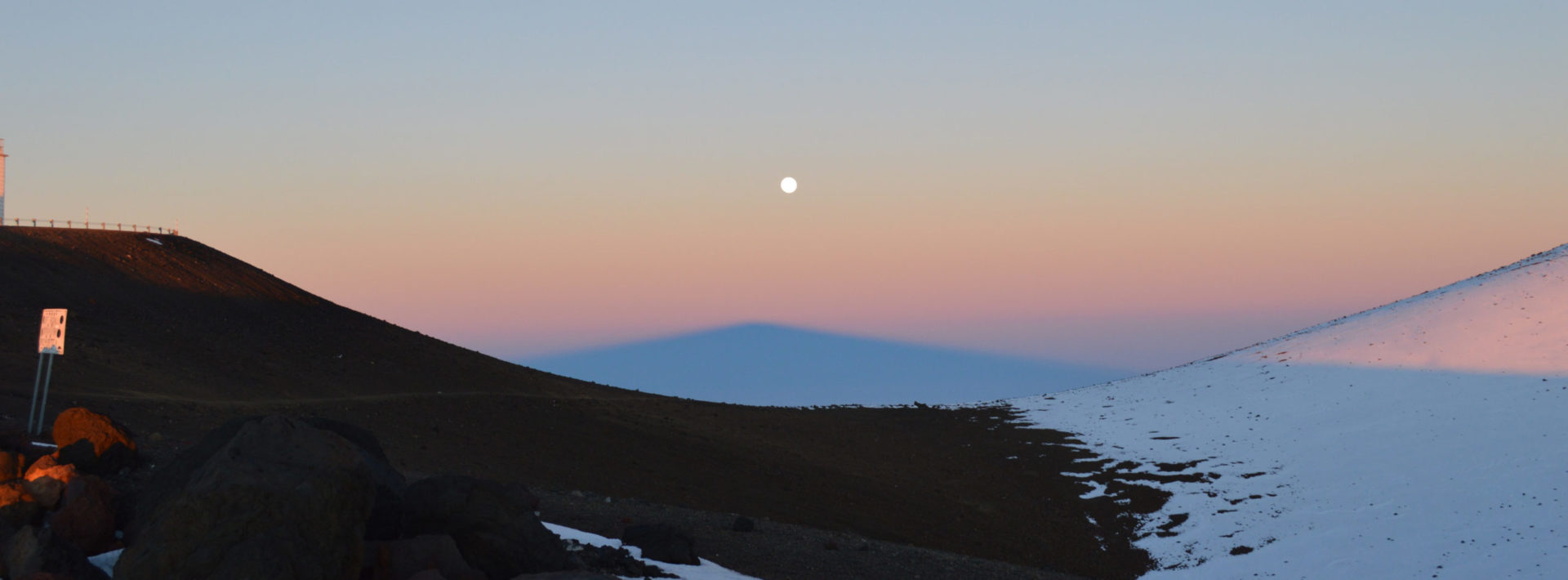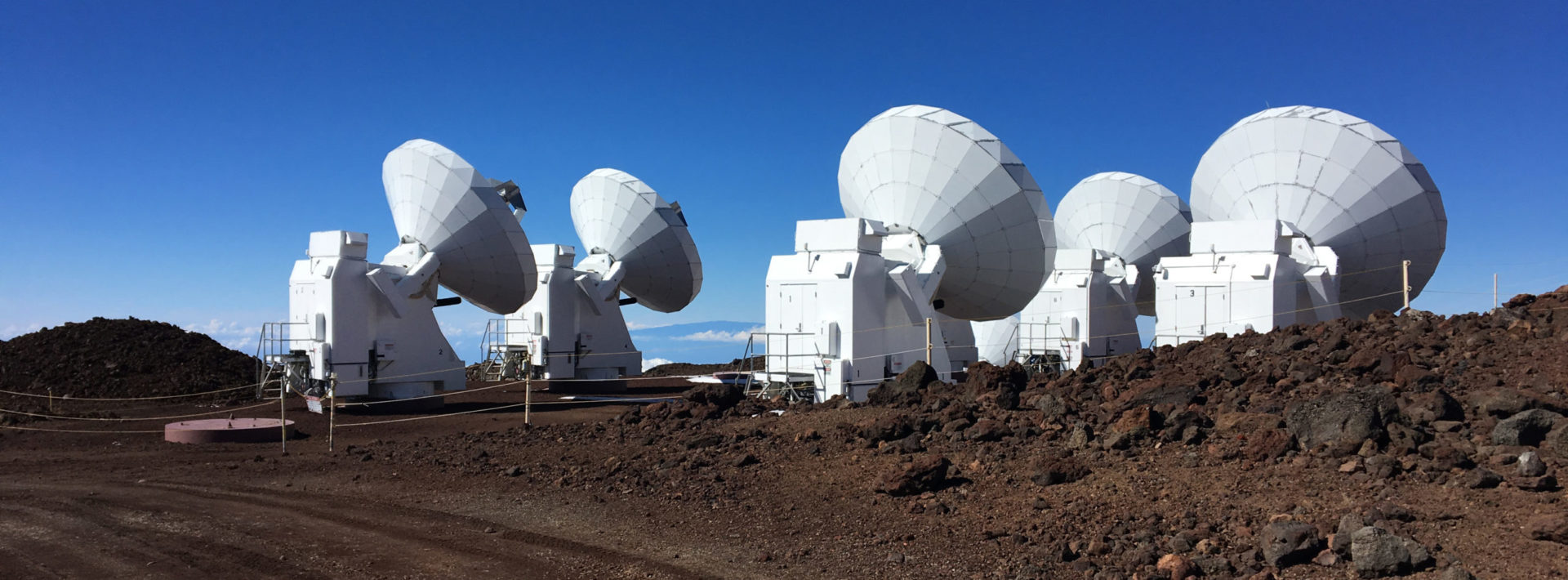TREX 2018 Day 14: Mauna Kea

By Meghan Reisenauer ‘19
As our days in Hawaii dwindle down, we’re all hoping to get as much out of these last few moments as possible. Today was absolutely an once-in-a-lifetime experience that we will all remember for quite a long time. We started the day in Kona by trading in our two minivans for 4-wheel-drive cars, boxy and big enough for all eleven of us. Then began the long, steep drive up the Mauna Kea ascent. It was beautiful to watch the scenery change from city life in Kona to lush vegetation and lava rock, up to the sparse and almost Martian-looking red hills on Mauna Kea.

David enjoying the snow atop Mauna Kea (White Mountain)

The iron oxide covered hills on the mountain
We made a stop at about 9,000 feet up the 14,000-foot mountain, to visit the offices for the Submillimeter Array telescopes at the summit. These telescopes were built and tested at MIT, and the data they collect is also sent back to the Institute among other places. We talked with Miriam and Ryan, two astrophysicists who work with the submillimeter telescopes. They gave us a brief overview of how the technology works and why it’s important in today’s world. These radio telescopes don’t take pictures like an optical telescope such as Hubble – instead, they focus on very faint wavelengths far away in the universe, and in some cases light from behind other large objects. The telescopes are incredibly sensitive and require careful calibration and maintenance.


The submillimeter array telescopes

Miriam showing us how the telescopes work
We got a tour of the office facility, then we went up to see the actual telescopes! Our TREX group was able to stand right underneath the seven huge dishes, each with 72 metal plates making up its cone. There are actually eight, but one was in the hangar undergoing maintenance, so we next went inside to take a mini tour of the very small interior of the telescopes. We could stick our head out a space in the side of the wall and look straight up through a small hole at the center of the dish. Then Miriam and Ryan took us to the control room, where extra oxygen is piped in for comfort at the high altitudes; Ryan said the room has usually about 25% oxygen in the air. We thanked the astrophysicists for their tour and left them with some MIT Course 1 hats and notebooks to show our gratitude.

Mirrors inside the telescope to amplify and smooth signals
Then it was time to see the very top of Mauna Kea! We passed various instruments used by teams from all over the world on our way up. Some of our group did a short hike to a nearby small mountain lake with green algae. The rest of us, lightheaded from the altitude, elected to head straight to the summit and find a great viewing point to see the sunset. Some time later, we all watched as the sun dipped below the faraway horizon, surrounded by beautiful and sacred Hawaiian mountains. It was freezing and windy at the summit, but the sun lit up the clouds a bright fiery red.


The sunset over the telescopes and snow atop Mauna Kea
Behind us, the incredibly bright supermoon rose in the sky – we just so happen to be in Hawaii at a time when the moon is full for the second time in a month, in its closest orbit to earth, and undergoing a lunar eclipse! This is referred to (at least on the Internet) as the “super blue blood moon,” although the astrophysicists we spoke to today may not approve of such a whimsical name! Later tonight, we plan to wake up around 2:30 in the morning to head outside and watch the total lunar eclipse. We feel so lucky to be here at all, and especially during such a remarkable astronomical time! Although we have to leave Hawaii so soon, we’ve had a wonderful and educational time, and we’re so happy to have the experience!


The supermoon at the summit of Mauna Kea
Every year, a group of MIT students and professors travel to the Big Island of Hawaii to gain fieldwork experience through TREX (Traveling Research Environmental EXperiences). The first TREX trip was held in 2000, and since launching has taken students on research activities in domestic and international settings. For more undergraduate opportunities, click here.



